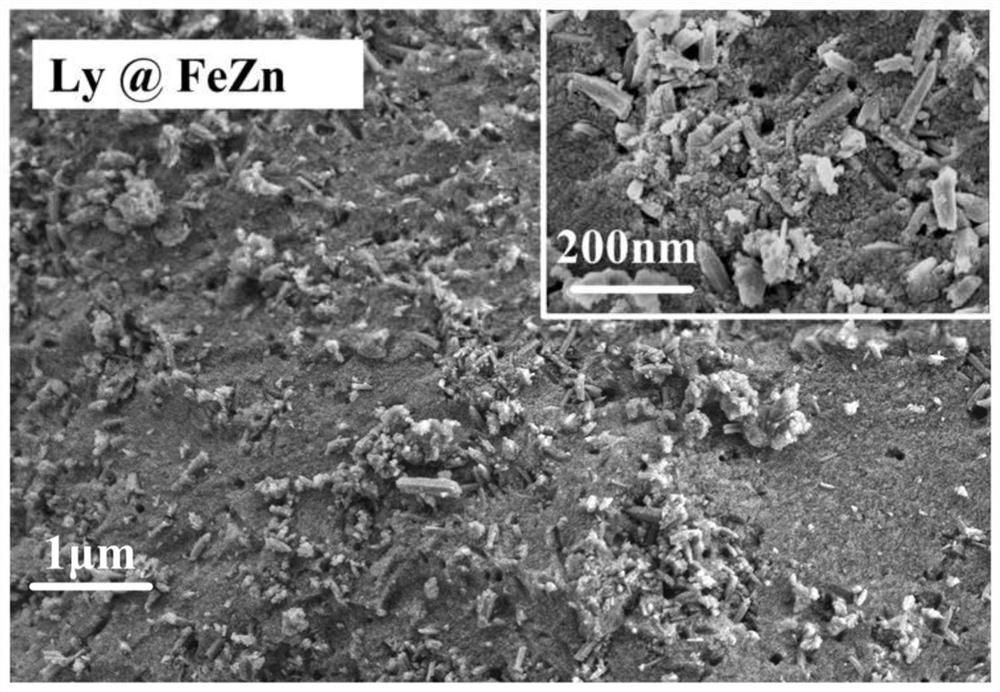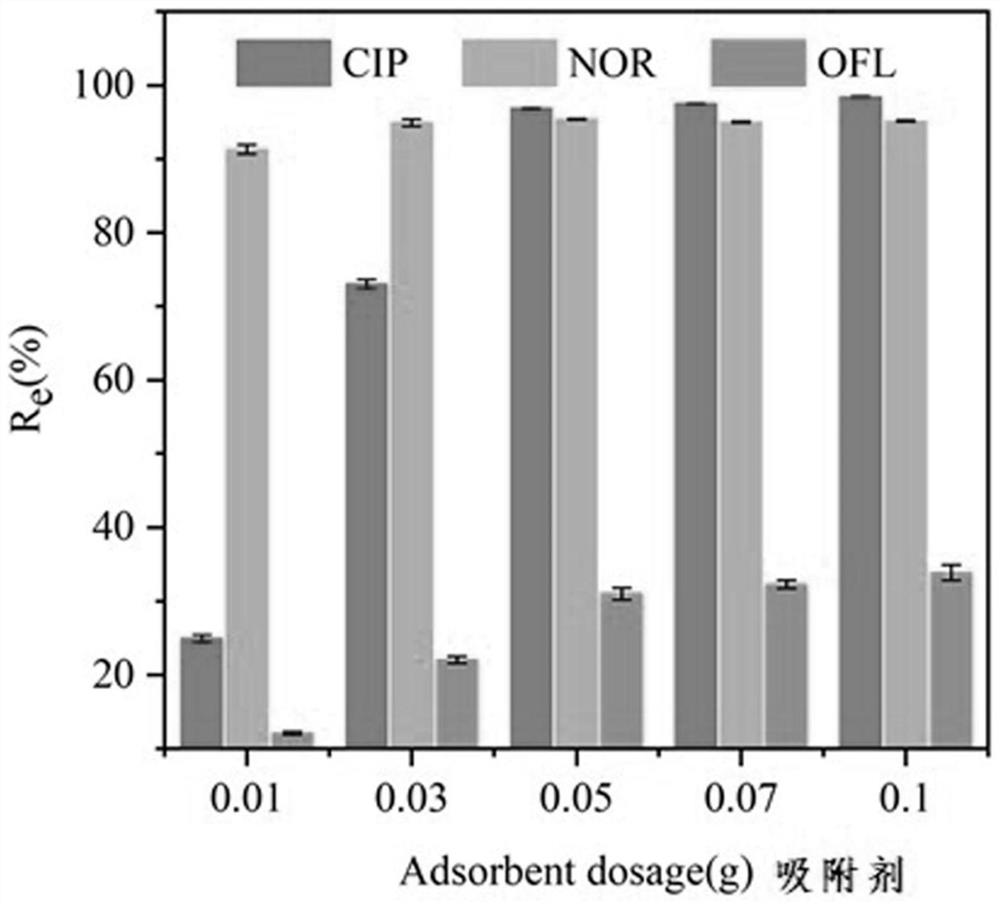Preparation method and application of lysine functionalized layered double hydroxide adsorbent
A hydroxide, lysine technology, applied in chemical instruments and methods, adsorption water/sewage treatment, water pollutants, etc., can solve problems such as poor adsorption performance and high price
- Summary
- Abstract
- Description
- Claims
- Application Information
AI Technical Summary
Problems solved by technology
Method used
Image
Examples
Embodiment 1
[0029] A preparation method of Ly@FeZn adsorbent, comprising the steps of:
[0030] a) 3mmol Fe(NO 3 ) 3 9H 2 O and 6mmol Zn(NO 3 ) 2 ·6H 2 O was dissolved in 100mL deionized water;
[0031] b) adjusting the pH value of the above mixed solution to 10 with a concentration of 1M NaOH;
[0032] c) 5.8mmol lysine was slowly added to the mixture and stirred for 5 minutes;
[0033] d) sealing the obtained mixed solution in an autoclave lined with polytetrafluoroethylene, adjusting the oven temperature to 60° C., and hydrothermally reacting for 24 hours;
[0034] e) Take out the mixed solution after the reaction, pour out the supernatant, pour the remaining mixture into a centrifuge tube, adjust the speed of the centrifuge to 4000rpm, centrifuge for 3 minutes, and separate the solid;
[0035] f) The separated solid was washed three times with deionized water, and finally dried in an oven at 60 °C for 12 hours to obtain Ly@FeZn adsorbent.
[0036] Experiments showed that the ...
Embodiment 2
[0038] A preparation method of Ly@FeZn adsorbent, comprising the steps of:
[0039] a) 3mmol Fe(NO 3 ) 3 9H 2 O and 6mmol Zn(NO 3 ) 2 ·6H 2 O was dissolved in 100mL deionized water;
[0040] b) adjusting the pH value of the above mixed solution to 10 with a concentration of 1M NaOH;
[0041] c) 5.8mmol lysine was slowly added to the mixture and stirred for 5 minutes;
[0042]d) sealing the obtained mixed solution in an autoclave lined with polytetrafluoroethylene, adjusting the oven temperature to 60° C., and hydrothermally reacting for 24 hours;
[0043] e) Take out the mixed solution after the reaction, pour out the supernatant, pour the remaining mixture into a centrifuge tube, adjust the speed of the centrifuge to 4000rpm, centrifuge for 3 minutes, and separate the solid;
[0044] f) The separated solid was washed three times with deionized water, and finally dried in an oven at 60 °C for 12 hours to obtain Ly@FeZn adsorbent.
[0045] Experiments showed that the r...
Embodiment 3
[0047] A preparation method of Ly@FeZn adsorbent, comprising the steps of:
[0048] a) 3mmol Fe(NO 3 ) 3 9H 2 O and 6mmol Zn(NO 3 ) 2 ·6H 2 O was dissolved in 100mL deionized water;
[0049] b) adjusting the pH value of the above mixed solution to 10 with a concentration of 1M NaOH;
[0050] c) 5.8mmol lysine was slowly added to the mixture and stirred for 5 minutes;
[0051] d) sealing the obtained mixed solution in an autoclave lined with polytetrafluoroethylene, adjusting the oven temperature to 60° C., and hydrothermally reacting for 24 hours;
[0052] e) Take out the mixed solution after the reaction, pour out the supernatant, pour the remaining mixture into a centrifuge tube, adjust the speed of the centrifuge to 4000rpm, centrifuge for 3 minutes, and separate the solid;
[0053] f) The separated solid was washed three times with deionized water, and finally dried in an oven at 60 °C for 12 hours to obtain Ly@FeZn adsorbent.
[0054] Experiments showed that the ...
PUM
 Login to View More
Login to View More Abstract
Description
Claims
Application Information
 Login to View More
Login to View More - R&D
- Intellectual Property
- Life Sciences
- Materials
- Tech Scout
- Unparalleled Data Quality
- Higher Quality Content
- 60% Fewer Hallucinations
Browse by: Latest US Patents, China's latest patents, Technical Efficacy Thesaurus, Application Domain, Technology Topic, Popular Technical Reports.
© 2025 PatSnap. All rights reserved.Legal|Privacy policy|Modern Slavery Act Transparency Statement|Sitemap|About US| Contact US: help@patsnap.com



